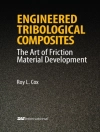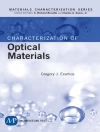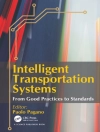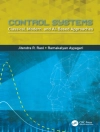Hybrid modelling of turbulent flows, combining RANS and LES techniques, has received increasing attention over the past decade to fill the gap between (U)RANS and LES computations in aerodynamic applications at industrially relevant Reynolds numbers. With the advantage of hybrid RANS-LES modelling approaches, being considerably more computationally efficient than full LES and more accurate than (U)RANS, particularly for unsteady aerodynamic flows, has motivated numerous research and development activities. These activities have been increasingly stimulated by the provision of modern computing facilities. The present book contains the contributions presented at the Third Symposium on Hybrid RANS-LES Methods, held in Gdansk, Poland, 10-12 June 2009. To a certain extent, this conference was a continuation of the first symposium taking place in Stockholm (Sweden, 2005) and the second in Corfu (Greece, 2007). Motivated by the extensive interest in the research community, the papers presented at the Corfu symposium were published by Springer in the book entitled “Advances in Hybrid RANS-LES Modelling” (in Notes on Numerical Fluid Mechanics and Multidisciplinary Design, Vol. 97). At the Gdansk symposium, along with four invited keynotes, given respectively by S. Fu, U. Michel, M. Sillen and P. Spalart, another 28 papers were presented on the following topics: Unsteady RANS, LES, Improved DES Methods, Hybrid RANS-LES Methods, DES versus URANS and other Hybrid Methods, Modelli- related Numerical Issues and Industrial Applications. After the symposium all full papers have been further reviewed and revised for publication in the present book.
Содержание
Hybrid RANS-LES Modelling: How to Proceed? The Round Table Forum Discussion.- Hybrid RANS-LES Modelling: How to Proceed? The Round Table Forum Discussion.- Invited Keynote Papers.- Reflections on RANS Modelling.- Flow Modelling in Aircraft Design – An Engineering Perspective.- Investigation of Practical Flow Control Methodologies with RANS/LES Hybrid Methods.- Advanced DES Methods and Their Application to Aeroacoustics.- DES Modelling Approach and Its Variants.- Detached-Eddy Simulation of Supersonic Separated Flows.- Evaluation of Time Sample and Span Size Effects in DES of Nominally 2D Airfoils beyond Stall.- Initial RANS and DDES of a Rudimentary Landing Gear.- Detached Eddy Simulation of Turbulent Flow in a Highly Offset Intake Diffuser.- DES for UCAV Weapon Bay Flow.- Control of the Unsteady Flow Inside the SOFIA Telescope Cavity by Means of a Porous Fence.- Zonal-Detached Eddy Simulation of a Civil Aircraft Engine Jet Configuration.- Assessment of DES on the Flow after a Snow-Flake Orifice.- Detached-Eddy Simulations Applied to Unsteady Crosswind Aerodynamics of Ground Vehicles.- Destabilizing Free Shear Layers in X-LES Using a Stochastic Subgrid-Scale Model.- Prediction of Transonic Buffet around a Wing with Flap.- Non-DES Type Hybrid RANS-LES Modelling Approaches.- RANS/LES Simulation of a Separated Flow in a 3D Curved Duct.- A New Partially Integrated Transport Modelling (PITM) Method for Continuous Hybrid Non-zonal RANS/LES Simulations.- A Hybrid RANS–LES Model Based on Temporal Filtering.- Scale-Adaptive Simulation with Artificial Forcing.- RDDES for Strong Shock-Wave/Boundary Layer Interaction.- Hybrid RANS/LES of Plane Impinging Jets with k-? Based Models.- LES Modelling Approaches.- Large Eddy Simulations: Wall Functions with Forcing Given by Backscatter from a Scale-Similarity Model.- LES of the Non-isothermal Flow in Rotating Cavity.- Comparison of Different Modelling Approaches.- Turbulence Modelling for Supersonic Separated Flows.- Evaluation of Hybrid RANS-LES Models in Ventilated Enclosures.- Experimental and Numerical Investigation of Transonic Bump Flow.- Comparison of Hybrid RANS-LES Calculations within the Framework of Compressible and Incompressible Unstructured Solvers.- EU Projects in relation to hybrid RANS-LES Approaches.- Description of Test Section and Measurement in a Nozzle for Shock Upstream Mach Number M=1.45.- UFAST Project – Unsteady Effects in Shock Wave Induced Separation.- From FLOMANIA via DESider to ATAAC.- Short Communications.- Scrutinizing a Seamless Hybrid LES/RANS Approach for Turbomachinery Applications.- Turbulent Flow Modeling via Galerkin Method and Finite Time Thermodynamics.












